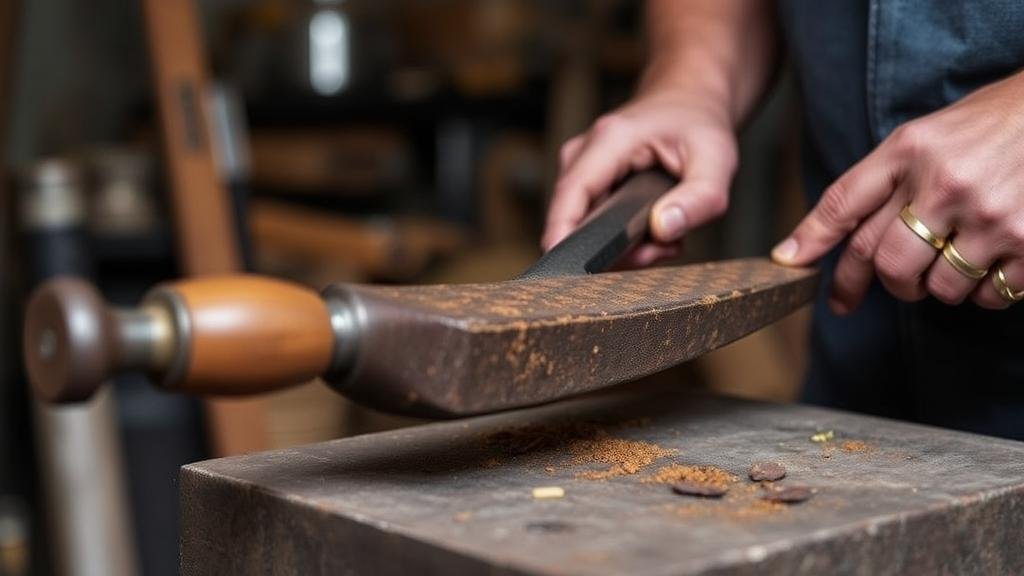Exploring Historical Blacksmith Guild Records for Craft Tool Locations
Exploring Historical Blacksmith Guild Records for Craft Tool Locations
The study of historical blacksmith guild records offers a unique lens into the craft of metalworking and provides valuable insights into the locations of craft tools used throughout history. This research seeks to explore how these records can illuminate the practices, craftsmanship, and geographical dispersion of blacksmithing tools in various regions, particularly from the late Middle Ages to the Industrial Revolution, with a focus on locations in Europe and North America.
The Historical Context of Blacksmithing
Blacksmithing has been a crucial trade since ancient times, playing a vital role in the development of tools and weapons. Initially, blacksmith guilds were formed to regulate the standards of craftsmanship, ensuring quality and safety in metalworking. Guild records from cities such as London, Paris, and Philadelphia not only document the artisans involved but also provide details on tools produced, traded, and utilized.
- The Worshipful Company of Blacksmiths in London, established in 1571, maintains records dating back several centuries.
- The Parisian guild archives from the 13th century highlight the techniques and tools commonly employed during that period.
- In North America, early records from the Pennsylvania Dutch blacksmiths in the 18th century provide insight into craft tools amidst agricultural communities.
Analyzing Blacksmith Guild Records
Blacksmith guild records typically include various types of documentation such as membership lists, transaction logs, and inventory of tools. These documents serve as primary sources for researchers attempting to piece together the history of the craft.
A notable example can be found in the records of the London Guild of Blacksmiths, which include detailed transaction logs indicating the types of tools manufactured, sold, or repaired, along with their geographical locations:
- Records from 1650 indicate a significant production of horseshoes, which were essential in urban centers.
- In 1800, an inventory reveals a rise in the demand for agricultural tools, especially in rural areas of England.
The Importance of Geographic Location
The geographic distribution of blacksmiths is closely linked to economic factors, such as the availability of raw materials and market demands. By analyzing guild records, researchers can identify patterns of tool production aligned with specific regions.
For example, in the early 19th century, blacksmiths in the northeastern United States were predominantly focused on producing iron frames for burgeoning industrial machinery, while their counterparts in the Midwest prioritized agricultural implements crucial for farming activities.
To effectively explore the blacksmith guild records, this research methodology includes:
- Archival Research: Visiting local and national archives to access primary source documents.
- Data Analysis: Compiling data from records into spreadsheets to identify trends and tool locations.
- Geospatial Mapping: Using GIS (Geographic Information Systems) to visualize the spatial distribution of blacksmithing tools across historical maps.
Case Studies of Notable Guild Records
Several case studies provide rich data for the analysis of craft tool locations within blacksmithing:
- Londons Worshipful Company: Their detailed accounts document over 200 different tools used in the trade.
- Philadelphia Blacksmith Records: Show tool inventory changes correlating with the citys industrial transformation from agricultural to manufacturing hubs in the 19th century.
Implications of Findings
The implications of these findings extend beyond the historical understanding of blacksmithing; they also shed light on the evolution of technological advancements in metalworking. For example, the transition from handmade tools to machine-assisted production reflects broader industrial changes.
Statistically, the number of blacksmiths in England decreased significantly from over 8,000 in 1851 to just over 1,000 by 1901, which mirrors the advent of industrial metallurgy and the consequent shifts in tool location and utility.
Conclusion
Exploring historical blacksmith guild records provides a wealth of information regarding craft tool locations and the evolution of metalworking practices. As researchers continue to delve into these invaluable resources, it is essential to consider the broader socioeconomic factors that impacted blacksmithing throughout history.
Future research can build upon these foundations by incorporating advancements in technology, such as digital humanities tools, which can further enhance the accessibility and analysis of historical guild records.
To wrap up, engaging with historical blacksmith guild records not only preserves the crafts legacy but also enriches our understanding of the intricate systems of production and trade that have shaped our modern world.


